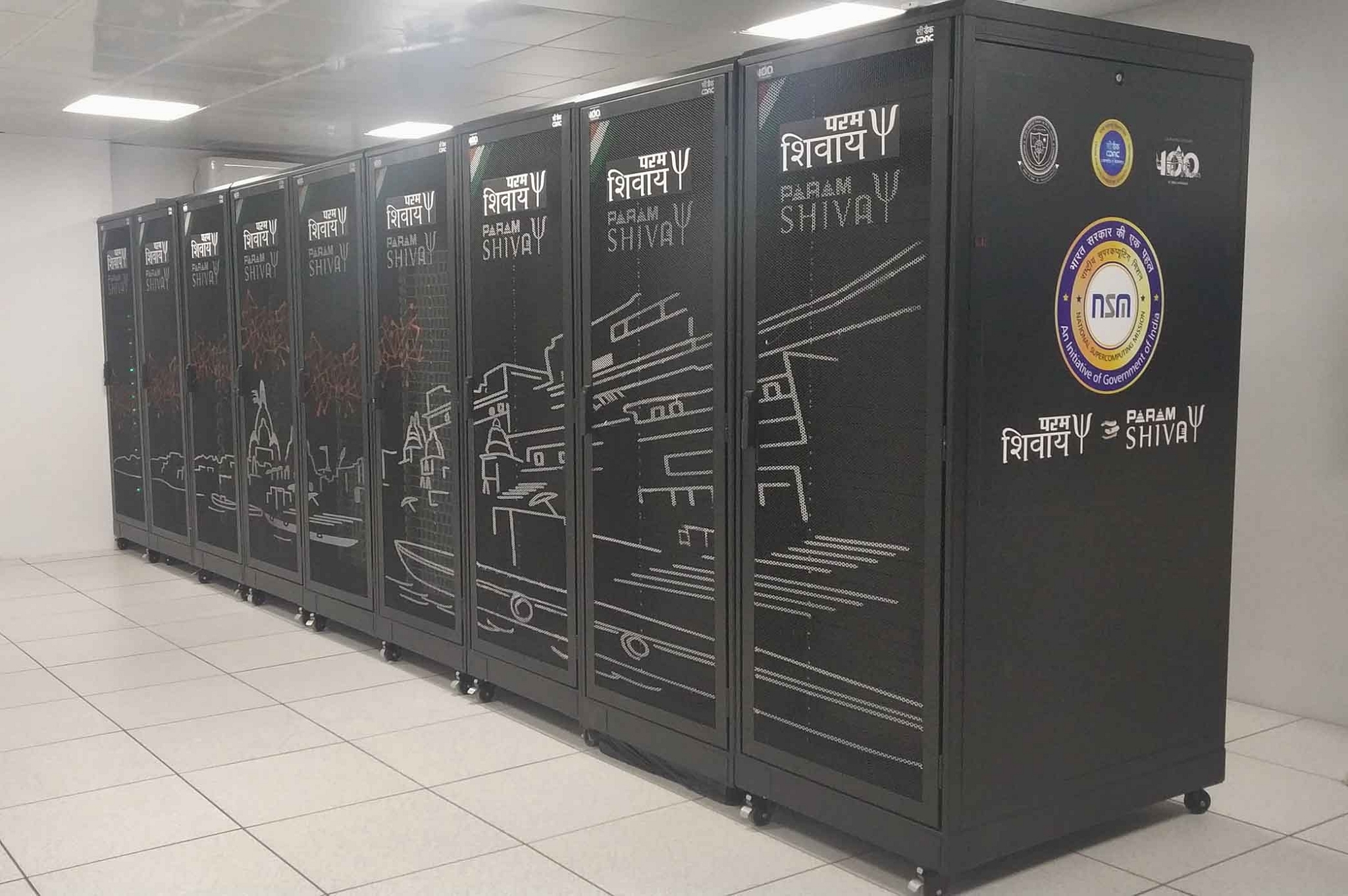Science
National Supercomputing Mission Update: More Premier Indian Institutes Sign On For Supercomputers
- Under the second phase of the National Supercomputing Mission, 13 institutes have signed MoUs for establishing supercomputing infrastructure.
- India is moving towards self-reliance in supercomputing and hopes to be a leader in the area.

Param Shivay supercomputer deployed at IIT (BHU) Varanasi
Thirteen premier research institutes are set to get supercomputers or related training centres under the second phase of India’s National Supercomputing Mission (NSM).
This development provides the biggest impetus yet to making high-performance computing accessible to India's researchers.
Under the first phase, which primarily dealt with assembly, supercomputers were deployed in IIT (BHU) Varanasi, IIT Kharagpur, and the Indian Institute of Science Education and Research (IISER), Pune.
While the second phase deals with assembly and manufacturing, the third phase will encompass design and manufacturing.
Essentially, India will move towards self-reliance in supercomputing.
The goal is to have a supercomputing grid connecting high-performance computing facilities in 75 research institutions across India.
The Memorandum of Understanding (MoU) was signed today (12 October) between the Centre for Development of Advanced Computing (C-DAC) – the research and development organisation of the Ministry of Electronics and Information Technology (MeitY) – and 13 participating institutions.
“Under NSM, we aim to attain self-reliance in supercomputing,” said Dr Hemant Darbari, the director-general of C-DAC. He said that they were looking to create infrastructure for a family of supercomputers of varying capacities across the country.
Besides installation of supercomputers, nodal centres will be established under NSM for training in high-performance computing and artificial intelligence.
The Indian Institute of Science (IISc), which has been working closely with C-DAC on the implementation of the mission, is set to get a supercomputer of 2.6 petaflop capacity.
The Indian Institute of Technology (IIT), Kanpur, will get one of 1.3 petaflop capacity. The IIT Kanpur facility, to be called PARAM Sangana, will support computing needs in the country’s north.
The IITs in Chennai, Kharagpur, Goa, and Palakkad will host training centres under the supercomputing mission.
The other institutes which signed MoUs today are IIT Roorkee, IIT Mandi, IIT Hyderabad, IIT Guwahati, National Agri-Food Biotechnology Institute, NIT Trichy, and IIT Gandhinagar.
Sanjay Dhotre, the Minister of State for Education, Communications, Electronics and Information Technology, was in attendance at the virtual event. He had tweeted earlier in the day that today was “going to be a big day in the field of supercomputing.”
Professor Ashutosh Sharma, secretary of the Department of Science and Technology, was also present at the virtual meeting.
He joked that while 13 – the number of MoUs signed today – was not considered an auspicious number, anything less than 13 would have been inauspicious in the context of India’s progress in supercomputing.
"The more, the merrier," he said, welcoming the increase in speed in the mission's progress.
Launched in 2015, the National Supercomputing Mission is being implemented jointly by the Departments of Science and Technology, and Electronics and Information Technology, along with C-DAC Pune and IISc Bengaluru at an estimated cost of Rs 4,500 crore over a period of seven years.
Earlier this year, the first supercomputer built under the mission was deployed at IIT (BHU) Varanasi and dedicated to India’s scientific community. PARAM Shivay, the name of the supercomputer, uses more than 120,000 compute cores to offer a capacity of 833 teraflops.
PARAM Shakti and PARAM Brahma followed not long after and were deployed at IIT Kharagpur and IISER Pune respectively.
Supercomputing is key to solving problems in a wide range of areas – fluid dynamics, climate modelling, materials science, computational biology, molecular dynamics, disaster simulations, and astrophysics, to name a few.
Under NSM, India strives to provide its researchers with wide access to supercomputing capacity while itself becoming a leader in the area.
Support Swarajya's 50 Ground Reports Project & Sponsor A Story
Every general election Swarajya does a 50 ground reports project.
Aimed only at serious readers and those who appreciate the nuances of political undercurrents, the project provides a sense of India's electoral landscape. As you know, these reports are produced after considerable investment of travel, time and effort on the ground.
This time too we've kicked off the project in style and have covered over 30 constituencies already. If you're someone who appreciates such work and have enjoyed our coverage please consider sponsoring a ground report for just Rs 2999 to Rs 19,999 - it goes a long way in helping us produce more quality reportage.
You can also back this project by becoming a subscriber for as little as Rs 999 - so do click on this links and choose a plan that suits you and back us.
Click below to contribute.
Latest